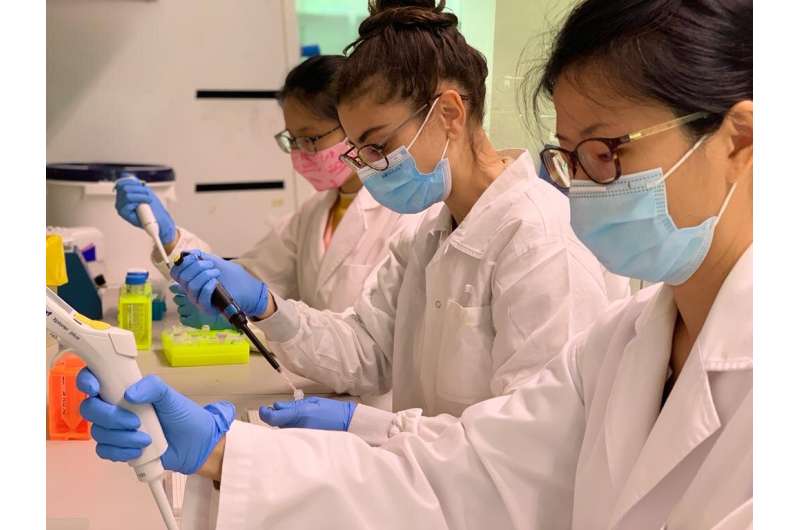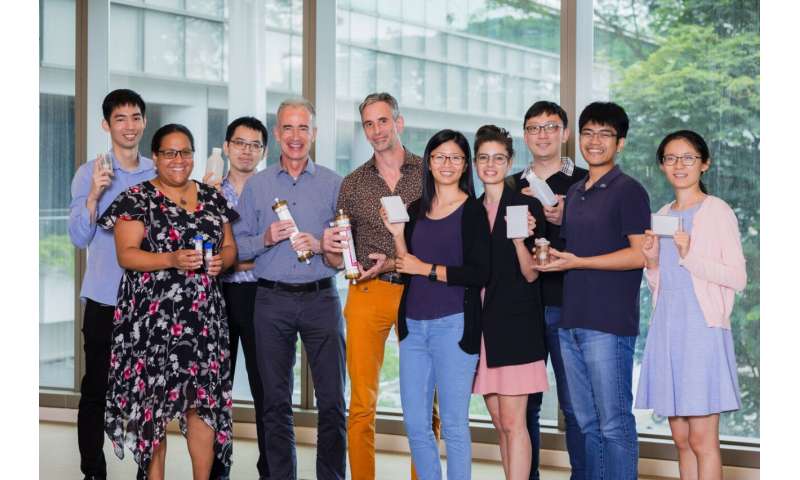Advances in the detection and quantification of viral pathogens in wastewater

Researchers at Singapore-MIT and international collaborators have made advances in viral detection in wastewater with the development of a new quantitative RT-qPCR assay that is able to detect the omicron variant of SARS-CoV-2. Such tests enable wastewater surveillance to accurately trace variant dynamics in any given community or population, and support and inform the implementation of appropriate public health measures tailored according to the specific traits of a particular viral pathogen. In another paper, SMART researchers and collaborators also reviewed the future of wastewater surveillance, outlining challenges and opportunities and mapping its potential to prepare societies for future viral outbreaks.
Wastewater monitoring emerged amid the COVID-19 pandemic as an effective and non-invasive way to track a viral outbreak, and advances in the technology have enabled researchers to not only identify but also quantify the presence of particular variants of concern (VOCs) in wastewater samples. This capacity to count and assess particular VOCs is unique to SMART’s open-source assay, and allows researchers to accurately determine displacement trends in a community. Hence, this assay can reveal what proportion of SARS-CoV-2 virus circulating in a community belongs to a particular variant. This is particularly significant, as different SARS-CoV-2 VOCs—alpha, delta, omicron and their offshoots—have emerged at various points throughout the pandemic, each causing a new wave of infections to which the population was more susceptible.
SMART researchers made the news in July last year for the first of these breakthroughs, having developed a quantitative assay for the alpha variant of SARS-CoV-2 in wastewater, while also working on a similar assay for the delta variant. Previously, conventional wastewater detection methods could only detect the presence of SARS-CoV-2 viral material in a sample, without identifying the variant of the virus.
Delta taken over by omicron within three weeks in Italy study
SMART researchers have developed a similar quantitative assay for the omicron variant, an allele-specific RT-qPCR assay which simultaneously targets the stretch of mutations from Q493R to Q498R, enabling the quantitative detection of omicron in wastewater. This is described in their paper, “Rapid displacement of SARS-CoV-2 variant delta by omicron revealed by allele-specific PCR in wastewater,” published in Water Research.
In their research, SMART found that the increase in booster vaccine population coverage in Italy concurred with the complete displacement of the delta variant by the omicron variant in wastewater samples obtained from the Torbole Casaglia wastewater treatment plant, with a catchment size of 62,722 people. Taking less than three weeks, the rapid pace of this displacement can be attributed to omicron’s infection advantage over the previously dominant delta in vaccinated individuals, which may stem from omicron’s more efficient evasion of vaccination-induced immunity.
“In a world where COVID-19 is endemic, the monitoring of VOCs through wastewater surveillance will be an effective tool for the tracking of variants circulating in the community and will play an increasingly important role in guiding public health response,” said co-author of the paper and senior postdoctoral associate at SMART AMR, Federica Armas. “This work has demonstrated that wastewater surveillance can be used to quickly and quantitatively trace VOCs present in a community.”

Wastewater surveillance vital for future pandemic responses
As the global population becomes increasingly vaccinated and exposed to prior infections, nations have begun transitioning towards the classification of SARS-CoV-2 as an endemic disease, rolling back active clinical surveillance towards decentralized antigen rapid tests, and consequently reducing sequencing of patient samples. However, SARS-CoV-2 has been shown to produce novel VOCs that can swiftly emerge and spread rapidly across populations, displacing previously dominant variants of the virus. This was observed when delta displaced alpha around the globe after the former’s emergence in India in December 2020, and again when omicron displaced delta at an even faster rate following its discovery in South Africa in November 2021. The continuing emergence of novel VOCs therefore necessitates continued vigilance on the monitoring of circulating SARS-CoV-2 variants in communities.
In a separate review paper on wastewater surveillance titled “Making Waves: Wastewater Surveillance of SARS-CoV-2 in an Endemic Future,” published in the journal Water Research, SMART researchers and collaborators found that the utility of wastewater surveillance in the near future could include (1) monitoring the trend of viral loads in wastewater for quantified viral estimates circulating in a community; (2) sampling of wastewater at the source—e.g., taking samples from particular neighborhoods or buildings—for pinpointing infections in neighborhoods and at the building level; (3) integrating wastewater and clinical surveillance for cost-efficient population surveillance; and (4) genome sequencing wastewater samples to track circulating and emerging variants in the population.
“Our experience with SARS-CoV-2 has shown that clinical testing can often only paint a limited picture of the true extent of an outbreak or pandemic. With COVID-19 becoming prevalent and with the anticipated emergence of further variants of concern, qualitative and quantitative data from wastewater surveillance will be an integral component of a cost- and resource-efficient public health surveillance program, empowering authorities to make more informed policy decisions,” added corresponding author Janelle Thompson, associate professor at SCELSE and NTU. “Our review provides a roadmap for the wider deployment of wastewater surveillance, with opportunities and challenges that, if addressed, will enable us to not only better manage COVID-19, but also future-proof societies for other viral pathogens and future pandemics.”
In addition, the review suggested that future wastewater research should comply with a set of standardized wastewater processing methods to reduce inconsistencies in wastewater data towards improving epidemiological inference. Methods developed in the context of SARS-CoV-2 and its analyses could be of invaluable benefit for future wastewater monitoring work on discovering emerging zoonotic pathogens—pathogens that can be transmitted from animals to humans—and for early detection of future pandemics.
Furthermore, far from being confined to SARS-CoV-2, wastewater surveillance has already been adapted for use in combating other viral pathogens. Another paper from September 2021 described an advance in the development of effective wastewater surveillance for dengue, Zika and yellow fever viruses, with SMART researchers successfully measuring decay rates of these medically significant arboviruses in wastewater. This was followed by another review paper by SMART published in July 2022 that explored current progress and future challenges and opportunities in wastewater surveillance for arboviruses. These developments are an important first step towards establishing arbovirus wastewater surveillance, which would help policymakers in Singapore and beyond make better informed and more targeted public health measures in controlling arbovirus outbreaks such as dengue, which is a significant public health concern in Singapore.
Source: Read Full Article
